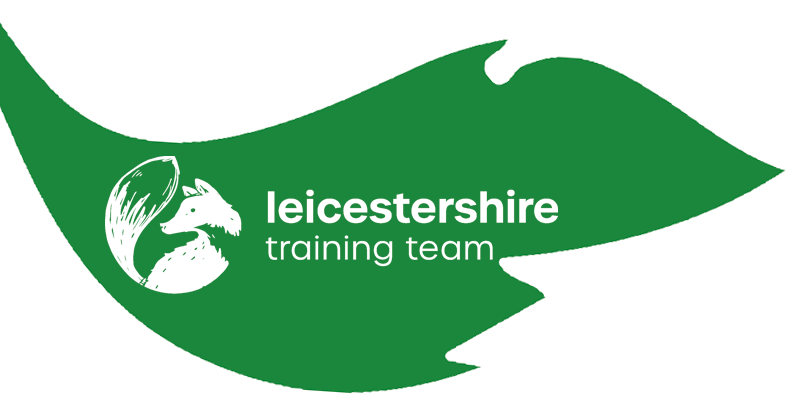What Is The OSCE Assessment?
Posted on 30th September 2021
The NMC (Nursing & Midwifery Council) have stated nurses need to pass two legacy tests in order to register as a nurse in the UK. The OSCE is the practical test looking at communication, holistic care and clinical skills.
This article will cover (click on the sentence to head straight there):
What happens on the day of the OSCE test?
On the day, the university will ask you for your documentation to prove who you are and also that the NMC has authorised the test. The NMC letter you'll receive will inform you of what to bring to the OSCE test. This is normally your identification & your national ID card; both of which must be in-date.
Once this has been done, you'll be asked to sign a health declaration form to state you're in good enough health to take the test. You'll also be given a health & safety notice to sign and an ID badge for the day.
As you've probably already guessed, they will ask you not to use any electronic items such as mobile phones during the test. Some sites may ask you to not bring them into the test site and put them somewhere else (like your car).
On the day, you'll need to work through 6 different 'stations' each lasting around 10-20 minutes each. These are areas where live actors (real people) will be pretending to be patients, some stations will have a manakin instead of a live actor. It's important to talk to the manakin and speak to them as if they are a real person! The invigilator will respond and be the voice for the manakin. You will need to attempt all 6 stations on the same day. You cannot only attempt some stations and then the others on a different date.
Most stations are designed to look like a hospital ward, however two of the six stations are areas where you'll be expected to sit at a desk. You will be tested as an individual, no station will test more than one candidate at anyone time. There will be an invigilator (an assessor) present at each station to record and score you as you go through the test. If you have any questions, queries or requests, these need to be directed at the invigilator.
The equipment during the stations may vary. Equipment can include oxygen, an emergency stop button, an emergency call bell, the bed controls, the BNF (British National Formulary), wound dressings and a clinical observation machine allowing you to take a person's BP, pulse, O2 stats (oxygen saturations) and temperature. You'll need to take respiration rates manually. If you forget to bring your own fob watch, the test centre normally have some spare just in case.
All equipment (including PPE) will be provided on the day so you can put your stethoscope away! If you need a drink of water, this will be provided for you; you're not allowed to eat or drink anything else during the OSCE test.
Two of the stations are for practical skills, the list of what these could be is here: Pratical Skills. At these two stations you'll be given information about what is expected of you, for example assess and dress this wound, and you'll also be given information about the patient for you to follow. You'll be given an information sheet which will give you tasks and requirements to help guide you through the practical assessment.
During the stations, you'll be able to see a timer on the wall so you can keep track of how you're doing so you know run out of time. Anything you do outside of the time limit will not be assessed so its crucial you do everything within the time given.
How will I be assessed during my OSCE test?
The way they mark and assess you will be via the acronym APIE:
A - Patient Centered Assessment
P - Planning Care
I - Implementation
E - Evaluation
Four out of the six stations are scenario based and will look at each of the above areas. It's important to demonstrate the 6Cs of nursing throughout each and every stations: Care, Compassion, Competence, Communication, Courage, Commitment.
A - Assessment Station
The invigilator will be looking for your verbal & non-verbal communication inline with the 6Cs of nursing. In particular they will be looking at how well you build a rapport with the patient, i.e. do you introduce yourself, are you warm and friendly, do you use their preferred name, do you gain consent etc. It's important to practice active listening (this when you listen to them and repeat back a summary of what they said, also picking up on things which might be upsetting or bothering them), make sure you provide eye contact and smile!
At the Assessment station you'll be given a pre-filled admission form. This will give you information about the patient, and help you follow a set of tasks to do in this scenario. You'll need to take the patient's observations and use the assessment documentation, like the NEWS or the Glasgow Coma Scale. Once you have the score, you'll need to verbalise this to the invigilator. It's also worth considering their Activities of Daily Living as this information will be used in the other 3 scenario stations.
P - Planning Station
At this station you'll be sat down at a desk in silence to complete a written test. This test will be based on what you found at the Assessment station. You'll need to record two relevant/critical aspects of care or self-care and how you would implement this. You won't need a pen as one will be provided for you.
I - Implementation Station
In this station you'll have a manakin to work with. Please remember to treat the manakin as if it was a real person and don't just talk directly to the invigilator. The invigilator will provide the response from the manakin, however your focus should remain with the manakin.
In this bay you'll be assessed on implementing care, such as carryout a drug round for that person.
E - Evaluation Station
This is the final station and you'll be sat down at a table in silence, just like at the Planning Station. Here you'll need to write a transfer/discharge style form relating to what happened during the three previous stations. Please try not to use abbreviations. A pen will also be provided for you so there's no need to bring one.
Part of the assessment will also include if you manage to complete the practical skill or scenario within the allotted time. However, the invigilator will also be checking that you are demonstrating safe practice so no rushing!
Throughout each station it's really important to verbalise what you are doing, almost as if you're teaching the invigilator. This is because they don't know whats going on in your head, however stating what you're doing will help you pass the test by giving the invigilator key information as you carryout the task.
Part of verbalising is also highlighting if you've made an error. If you have done something wrong, its really key to state it and say how you would correct the error. Please be aware, that if you have made a critical error, stating how you would correct it will not make it okay; you'll still be penalised for it.
What clinical skills do I need for the OSCE Test
Out of the six stations, four will be scenario based where you'll have a situation which you will need to work through. The other two stations will be testing your practical skills. These skills should not be new to you. There is a list of skills below which could be included in the scenarios or as a stand alone test.
Each station is marked out of 20 points and is based on the NMC standards for Pre-Registration Education 2010 and the NMC Code 2015. Skill assessments are graded against the standards set out in the Royal Marsden Manual of Clinical Procedures (9th edition) and the Resuscitation Council UK standards.
Please be aware that the OSCE is recorded digitally. This is so an independent examiner can review the assessment to ensure fairness and standards.
List of Clinical Skills
Administration of Inhaled Medication
Aseptic Non-touch Technique
Fluid Balance chart
Calculating drug dosages
Medication administration
Peak expiratory flow rate
Urinary catheterisation – including insertion, catheter care, obtaining a specimen of urine, removal of a catheter etc
Hand hygiene
Physiological observations/Vital signs
Safe disposal of sharps
Wound care
Fine bore nasogastric tube insertion
Visual infusion phlebitis (VIP) assessment and intravenous cannula flush
Pressure ulcer assessment
Intramuscular and subcutaneous injections
In Hospital Resuscitation (without defibrillation)
Share this post:



